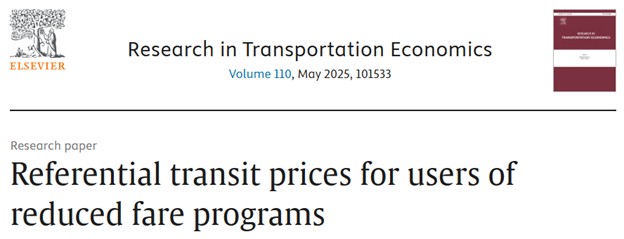Sergio R. Jara-Diaz, Diego Cruz, Felipe Tapia
Abstract
Students, elderly, handicapped, and low-income individuals can apply for reduced fare programs (RFPs) in many cities worldwide. Such programs represent specific social preferences for those groups. However, prices in RFPs are always reported as a fraction of the so-called full fare, which is presented as society’s willingness to favor those groups for whatever reasons. We argue that full fares are not the correct reference for comparison because special groups exhibit differences in how they use the transit system (e.g., different trip lengths, boarding times, or different occupation of vehicle space), which induces differences in marginal costs. By expanding the well-known one-line stylized transit model to admit different user types, we show that marginal cost fares depend on trip characteristics such as boarding-alighting times and/or average trip lengths. These group-specific marginal cost (first best) prices are proposed as the appropriate reference for comparison with the observed fares. This means that social preferences for special groups should be reflected by fares lower than the corresponding marginal social cost. This general theoretical framework is applied to elders and students using parameters from Santiago, Chile, where observed fares are lower than the full fare but higher than the estimated marginal social cost.
